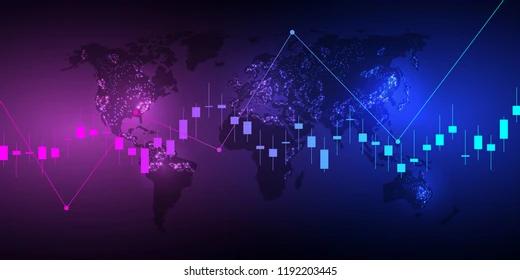
3 minute read
The Birth of the Stock Market
A stock exchange, often known as a stock market, is a physical or online location where investors can purchase and sell securities, including stock, in publicly traded corporations. Supply and demand, investor mood, domestic and international economic developments, and supply and demand dynamics influence each share's price. The price rises as more individuals want to purchase shares (or as demand increases). The price of a share decreases when there is less demand Most nations currently have stock markets, but the first was established in Amsterdam in the 17th century.
Ancient civilizations had the idea of trading items Early enterprises would pool their resources to send ships across the ocean to distant countries. Trading organizations or lone traders carried out these transactions for thousands of years. Merchants met in the center of towns throughout the middle Ages to exchange and trade items from many nations Since these traders came from various countries, a money exchange had to be set up to ensure that trades were fair. By the end of the 1400s, Antwerp, or what is now Belgium, became the hub for world trade It is believed that certain business owners would purchase products at a given price in the hopes that the price would increase and allow them to profit. Wealthy merchants would loan money at high-interest rates to others who needed to borrow money. The bonds guaranteed by these loans would then be sold by these merchants, who would pay the buyers' interest.
Advertisement
The Dutch East India Corporation became the first publicly traded corporation, which led to the establishment of the first modern stock trading market in Amsterdam. The business decided to sell stock and give shareholders dividends to obtain funds The Amsterdam stock exchange was subsequently founded in 1611. Shares of the Dutch East India Company were the only securities traded on the exchange for a long time.
At this time, comparable businesses were being founded in other nations, and stock purchases were becoming common among investors Most investors were so enthralled by the enthusiasm that they invested in any startup that became available without researching the company first. Due to the resulting financial instability, investors eventually tried to sell all their shares quickly in 1720 out of panic But nobody was buying, and the market fell The South Sea Bubble was the next financial crisis in England shortly after. Investors grew acclimated to the idea of trading stocks, even though the thought of a market crash worried them.
The U S entered the stock market in the late 1700s, even though the first stock market opened in Amsterdam in 1611. A select group of businesspeople made the Buttonwood Tree Agreement at that time. This group of men regularly got together to trade stocks and bonds, which eventually gave rise to the New York Stock Exchange (NYSE), as it is known today. The Philadelphia Stock Exchange was America's first stock exchange, even though the Buttonwood dealers are credited with creating the country's largest stock market The Philadelphia Stock Exchange, established in 1790, had a significant influence on the city's position in the world economy, contributing to the growth of the financial industry in the United States and its westward spread.
The National Association of Securities Dealers Automated Quotations, or NASDAQ, a second stock market in America, started trading in 1971. In 1992, it teamed up with the London-based International Stock Exchange. This connection created the first international securities market. The NASDAQ allowed investors to trade stocks over a network of computers rather than in person, in contrast to the NYSE, which is a real-world stock exchange. Investors could purchase and sell stocks on the American Stock Exchange or other regional markets, like those in Boston, Philadelphia, and San Francisco, in addition to the NYSE and the NASDAQ It took centuries for the New York Stock Exchange to reach its current state. The Buttonwood traders created the New York Stock and Exchange Board in 1817 after visiting and observing the Philadelphia Merchants Exchange. The members have to enter the exchange and adhere to a dress code Additionally, they had to pay a charge, which by 1837 had gone from $25 to $100. Lower Manhattan lost 700 buildings in the Great Fire 1835, while Wall Street sustained substantial property losses. Fortunately, Samuel Morse established a telegraph demonstration office, enabling remote communication between brokerages. The NYSE opened its doors 1903 with thousands of stock certificates stored in underground vaults.
Despite signs of an economic collapse, the stock market soared and reached a 50% high in 1928. Black Thursday, a day when the market fell 11% in 1929, is referred to as such. Investors panicked as a result of the market decline, and it took the entire 1930s for things to stabilize. The Great Depression was in effect during this time. The market has seen numerous additional disasters since then, including the 2008 subprime mortgage crash

Even though the NYSE was founded by a small group of merchants’ centuries ago, several investors, exchange executives, businesses, and regulators have helped it develop into what it is today. The biggest stock exchange in the world is the NYSE. Nevertheless, domestic and foreign equities are now traded on exchanges in significant cities worldwide. These include the stock exchanges in London and Tokyo. Other major exchanges may be found in China, India, Canada, Germany, France, and South Korea
Author: Priyanshu Goyal








